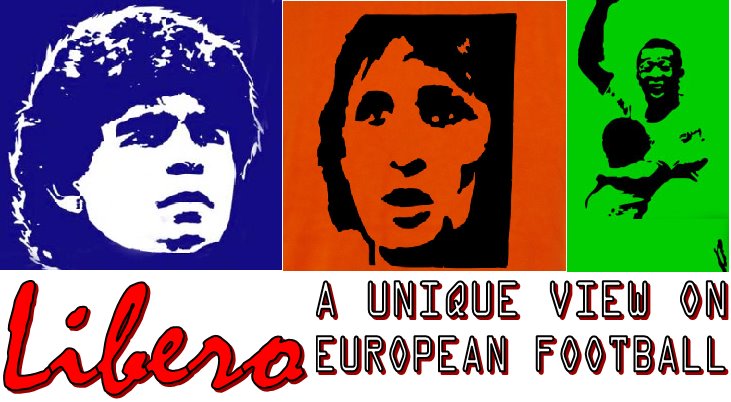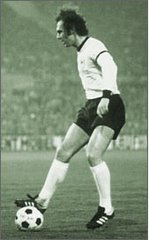When Bojan Krkic scored a poacher’s goal to deny England yet another victory on the international stage recently in the UEFA U17 Euro Championships in Belgium, it makes one wonder how far ahead foreign youth systems are evolving away from England.
Recently, looking at the FA Youth Cup Semi-final between Manchester United and Arsenal at Old Trafford, it was quite clear who the most influential player on the park. Francisco Merida Perez. Not an Englishman, but a Barcelona youth product, who dominated the game with his wide array of passing skills and priceless ability to shield the ball. This begs the question, how far has the league academy system progressed since its inception?
Club teams all over mainland Europe have seen the fruits of their labours at some point over the last few years. Names that immediately spring to mind are Barcelona and Ajax and also the famed Clairefontaine academy in France. With statistics suggesting the game has become more defensive in recent years with the average strike rate being 2.28 goals per game – the lowest yet in the history of the Champions league, passing and ball retention is vital, and England’s stereotypical ‘gung-ho’ approach has been criticised, recent evidence is suggesting that Arsene Wenger’s promise of the academy producing world class talent finally bearing fruit. This involves mixing a few foreign youngsters, namely Nacer Barazite and the precocious Merida, accompanied by an English spine. Proof was evident in the strong cup run which ended when Merida, having played three games for the Spanish U17 team in the previous five games was forced Steve Bould (Arsenal youth team coach) into making a substitution changing the tide of the youth cup semi final second leg with the ‘Gunners’ conceding four times in relatively quick succession.
This method hasn’t been taken very positively by Joan Laporta, who was furious of the methods adopted by English clubs, with Cesc Fabregas and Gerard Pique being ‘poached’ by Arsenal and Manchester United respectively. “We are a club that has invested €7 million in the youth policy and now it causes us a great problem that English clubs pay attention to our youngsters," Barca president Joan Laporta told El Mundo Deportivo. The idea of copying the Spanish league’s use of feeder clubs in lower leagues was supported by managers of the top four sides in the Premiership, but rejected by the upper hierarchy at the Football Association. The potential benefits are great as fans will have noticed through loan spells at lower league sides with Justin Hoyte improving considerably in the more physical Championship. Although, with a whole team of young inexperienced players in a lower league, this could be detrimental to the players’ development as Barcelona B recently discovered, dropping to the fourth tier of Spanish football. This, ironically, lead to calls for their young starlets to be loaned out to leagues of higher quality for experience, in contrast to the potentially great idea that premiership bosses had looked into.
The contrast in styles also affects development, with teams such as Arsenal teaching their youth teams to ‘Joga Bonito’ or play beautiful, following Arsene Wenger’s philosophy, as I witnessed the one touch passing along the ground at their youth cup games, with the long ball only occurring when all possible angles were explored in an attempt to play the ball out to the defence. While in Brazil, where players are discovered as young as the age of five, as football is seen as a way to escape the ‘favelas’ forming around the main cities, the game is developed through playing futsal, where close control and skill are developed. In contrast, in the economically developed European counties, football is only a number of ways to earn a living and with compulsory schooling present too, the early development of players is hindered. The import of foreign players has been helping the English game recover after the three year ban from Europe in the 1980s after the incident in Heysel. Those lost years after a period of English dominance concerning the European Cup affected the English game as Arsene Wenger states: “We have to secure a place in the Champions League” as its experience is vital to youth development.
Another way through which English clubs have to catch up with the foreign youth systems is through the scouting systems, where big European clubs are poaching the best youngsters from relatively unknown places and grouping them together in the hope of finding a gem. In contrast English clubs must find potential stars in a certain area, with any under 16 players having to live within an hour and a half drive in England. This hinders development, for example a promising player in Bristol, would not be allowed to move to a Champions League club, where under the guidance of top youth team coaches, he would blossom. To overcome this ruling by the FA, “if a club wants that player, the club can give the parents artificial work”, as Arsene Wenger states. International rules are even more complex, with FIFA prohibiting international movement of all U18 players, while UEFA allow movement of U16 to U18 players internationally. This bending of the rules is unnecessary, as is the over complication forming loop holes, which clubs such as Barca have exploited, by luring Lionel Messi to the Nou Camp when he was 12, by offering to pay for growth hormone treatment, which his own club could not afford. Recently they were lambasted by FIFA for a similar approach to Messi’s countryman, Erik Lamela, a 12 year old prodigy.
Clubs such as Arsenal and Chelsea have been finding youth talent all across the globe, with players such as Carlos Vela discovered, but the downside of these potential stars is their nationality, with work permits and visas rarely given on account of a lack of appearances for their national teams. In contrast the more relaxed laws in Spain, mean that youth players can be directly transferred into the team and then earning a Spanish passport in the process and free movement within the EU. Due to this, Spanish youngsters have been an attractive proposition to English clubs due to their availability and equally attractive is the promise of a faster route into the first teams of Europe’s greatest clubs. Due to the strict rules concerning international transfers, players from impoverished areas often lie about their age, a problem occuring frequently in Africa, where the infrastructure of youth football has deteriorated so much that players are bought and sold by agents, effectively forming a kind of slave trade, with the families of the youngsters being dried of every penny that they earn in the promise of a potentially false dream. This scheme is morally wrong as it is ethically, with the players that make it to Europe but have been turned down, reluctant to return to their homes for fear of shame.
The lack of a national academy in England has also been blamed for the lack of talent being produced with the majority of the Under 21 players being on the periphery of their club teams. Structure of youth development in different countries has also had an affect on production of potential stars. With Clairefontaine adopting a strategy of normal schooling with technical training after 4pm, whereas in England, the amount of training is limited due to pressures of schoolwork. In contrast, clubs such as Real Madrid, where the scouting network is very efficient, but the efficiency of youth players being transferred to the first team is low as little or no technical training is done until the player becomes 15.
As the youth policy changes with imports being reduced and the emphasis on home-grown players put forward, this is likely to hinder English teams, still improving on the technical accomplishment of their products. But while missionaries such as Arsene Wenger remain in the English game, expect future English teams to succeed on the international stage once more.
Wednesday, 27 June 2007
Subscribe to:
Post Comments (Atom)



No comments:
Post a Comment